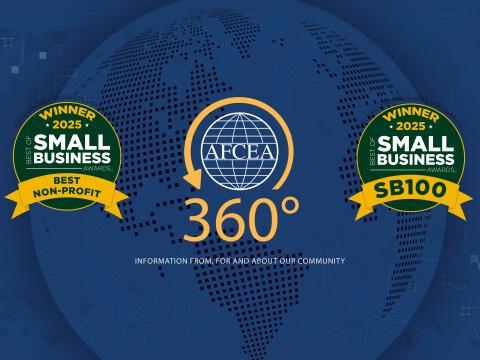Licensing Application Process Improves
 |
| The U.S. military’s extensive use of information technology complicates decisions about approving applications for a license under International Traffic in Arms Regulations (ITAR). Issues revolve around both the potential users and uses of computer systems and software, and the U.S. State Department must ensure that the sale of certain capabilities does not end up placing the United States at a disadvantage. |
The U.S. State Department has made significant changes during the past 12 months to speed up the process of obtaining a license to export defense-related products. License application approval times for items that fall under International Traffic in Arms Regulations have decreased more than 50 percent, from an average of 35 days to 15 days. This is especially good news for small business owners who do not have the revenue flexibility to miss sales opportunities while they slog through miles of red tape.
Under the International Security Assistance and Arms Export Control Act of 1976, or AECA, the U.S. State Department administers the International Traffic in Arms Regulations (ITAR) through its Directorate of Defense Trade Controls. The regulations restrict the export of defense articles and defense services. Articles include any items, software or technical data on the U.S. Munitions List (USML); services include training foreign persons with respect to defense articles and providing technical data associated with a defense article. Any item or service related to the USML requires an export license.
Failing to comply with the rules to obtain a license can be a fatal step for small business owners. The fines and penalties are steep, the enforcement through prosecution is growing at an ever-increasing rate, and the impact of an AECA conviction on a business can be extraordinary. An offending individual is barred from exporting for life. The company is barred from exporting for a minimum of three years; the criminal penalties are 10 years in prison and $1 million per violation.
While some items on the USML such as weapons, radar systems and electronic combat equipment are obvious
Complicating matters is a world crisscrossed by the World Wide Web. While it is a relatively simple—if not easy—process to monitor weapons or chemicals sent outside the
Adherence to ITAR can be full-time job for at least one person at a company. This may not be an issue for large defense contractors that either have the personnel on the payroll or can outsource the job to a firm that specializes in ITAR. But for a small business, dedicating significant time to ensuring ITAR compliance may be prohibitive. As a result, entrepreneurs have seized the opportunity to offer software that explains the procedures necessary to protect a company; handbooks and seminars also abound.
Recognizing that the application process can be both slow and confusing, during the past year the State Department has focused on making the system work the way it was designed to work. Robert S. Kovac, managing director of the Directorate of Defense Trade Controls, Bureau of Political-Military Affairs, U.S. State Department, explains that an abundance of useful information is now available through easily accessible avenues. And, perhaps more importantly, Kovac’s 53 staff members provide customer service that helps companies smooth out their own path to a license.
The evidence of how the changes improved the system is apparent. On average, the directorate currently has between 1,600 and 1,700 applications flowing in and out of the process each week; up to 99 percent of the license applications are approved. As little as 18 months ago, Kovac notes, it took an average of 35 days for a license application to be processed; 900 applications had been under consideration for more than 60 days. “Does ITAR hinder trade? If you have a licensing system like that, it sure will,” Kovac says. Today, that application process takes an average of 15 days, and the number of applications under consideration for more than 60 days averages around 40.
To bring about this change, Kovac and other leaders at the State Department dug in and started smoothing out the licensing road for companies—big and small alike—with legitimate business interests abroad. Five teams of between six and 10 individual licensing officers (LOs) focus on different functional areas: missiles, arms and small arms ammunition, aircraft, ground systems and electronics.
When a license application is submitted, it is evaluated by the team lead, who then assigns it to a specific LO depending on the area of expertise and workload. An LO works with between 30 and 40 companies and continues to work with a firm until the case is closed.
Most companies try to comply with the law, Kovac points out, but they just may not know how. Although a company fills out the application to the best of its ability in light of how it interprets the regulations, information still may be missing. Kovac instructs his staff to call these firms and explain what needs to be clarified.
At times, LOs may not be able to reach a company, at which point the application falls into the “return without action” category and is sent back to the applicant with a list of missing information. “Our computer system is set up so that if the company calls us, the LO can add the information to the license application that we’ve already received, so we don’t have to return the license application and have them start from scratch in most cases.
“My guys are real good, they’re getting better all the time and we’ve seen a lot of benefit out of this. When I got here last year, the return-without-action rate was about 17 percent. That looked awfully high to me considering that these companies are professionals. It’s a relatively basic form. So we’ve been working a lot with the licensing officers, the LOs have been working as a team, and that’s now down below 8 percent,” Kovac notes.
In addition to individual attention, Kovac’s shop offers in-house seminars six times a year that are open to license applicants only. “They can come in, and we will sit down and walk them through, step by step, every form, everything that we look for, everything that needs to be done,” he explains.
To extend outreach even further, the directorate teams with the Society for International Affairs to offer half a dozen conferences annually about the ITAR. Kovac sends not only LOs to these events but also staff members who work on agreements, compliance and commodity jurisdiction. These experts conduct presentations over a two- or three-day period. Locations vary and have included
Depending on the availability of resources, the directorate also participates with other governmental agencies, such as the U.S. Commerce Department and U.S. Defense Department, in additional conferences that reach out to industry.
Another program reaches out to where business owners live. The directorate’s company outreach program involves sending out teams of staff members to specific areas of the country approximately 10 times a year. Where the teams visit can depend on a number of factors such as questions that have been raised repeatedly or the sensitivity of the products being created in a particular region. Upon arriving in an area, the teams visit two or three companies.
The directorate also enhanced its section of the State Department’s Web site to provide more detailed information about the process. The licensing link features guidelines about how to fill out forms, how to create a technical assistance agreement and what policies apply to the export of different types of technologies. “There’s a lot of information there, and we’re adding to it every day,” Kovac says.
A response team also has been set up to answer general questions. These four staff members respond to inquiries sometimes by pointing a caller to information on the Web site and at other times by taking a question directly to an LO or division chief.
Kovac says the need for help to register a company with the State Department or to obtain a license does not differ much when it comes to the size of the firm; the difference is usually only in scale. Small companies generally have more questions about how to fill out a form and what needs to be included, and Kovac has emphasized with the LOs that this should be considered normal.
“One of the things that you get when you do a volume business—which we do—is a little jaded about how to fill out the forms. So I sit down with the guys and talk to them about that and say, ‘This is easy for you because you do 60 a week. The average company that applies does 20 a year, and a lot of them don’t do that many.’ About one-third of the companies do about less than 10 licenses per year. The good news is that, in a fixed standard, once you get it right, you can normally get it right,” he relates.
 |
| Tech. Sgt. Monique Whitaker, USAF, and Mahad Omar, a Djiboutian air traffic controller, work together on the upper level of the Djibouti Ambouli Tower. While U.S. exports of air traffic control equipment are monitored through the State Department, expertise in operating commonly used technologies can be shared by members of the military without authorization. |
The State Department has some help in this regard from industry itself. Many of the tips the department receives are from companies that indicate something amiss about an export. “So a lot of them [the prosecutions] have been developed because of what industry has said. A company will say, ‘Yes, I know what he’s saying. He wants me to build him X, and he tells me it’s for a commercial platform. But you know what? There’s no way. Nobody would pay this much to put this much capability into a commercial platform.’ They call us or they call [
But the
The directorate also scrutinizes applications that show an apparent lack of understanding. “It has to pass the ‘straight face’ test. For example, the applicant gets an order from a customer in a Middle Eastern but non-Iranian country to build a wiring harness for his commercial aircraft and then sends him the specifications for an F-4. If you know anything about wiring harnesses, they don’t work that way. And we have had some people claim, ‘Well, I just didn’t know,’” Kovac shares.
Changes in technology and an abundance of dual-use products may indicate the need to review the USML and Commerce Control List, Kovac indicates. Although the lists have been adjusted slightly over the years, it is not clear whether these lists are the best the government can do. “Is ‘design intent’ still the right answer? We’re seeing more and more cases where the capability of the commercial system is at or greater than the capability of the military system.
“This commodity jurisdiction process is one of the things that we’ve got that’s still broken, but a lot of the same questions keep coming up, and they’re generated from the question of capability. I have something that was specifically designed for military use, not a problem. I have something that I built for the commercial market, but …. Then there’s a question,” he allows. The directorate is reviewing this process, and the fundamentals of the control lists themselves may need another review, he adds.
Web Resources
Directorate of Defense Trade Controls, U.S. State Department: www.pmddtc.state.gov
Society for International Affairs: www.siaed.org
Small Businesses Must Understand Regulations Adhering to the International Traffic in Arms Regulations (ITAR) can be like entering a tangled web of forms and approvals. The trick is to focus on what a license application requires, then to provide the information that is needed. First, companies should determine if an item they wish to export is on the U.S. Munitions List and therefore requires a license. For example, licenses are not needed to share public domain information such as general marketing data, delivery terms or time to delivery; however, they are required to share blueprints, technical data or other schematics. Next, an applicant needs to gather information from the potential customer. This information includes name, location, function and users as well as if the item will be incorporated into another product or will be used in a stand-alone capability. The next step involves the purchase order or letter of intent and filling out the ITAR licensing application. This can be submitted online. Once the Directorate of Defense Trade Controls receives the application, it reviews the document to determine if it must be reviewed by organizations such as the U.S. Defense Department or, in certain circumstances, Congress. If review is required, the directorate forwards the application to the appropriate agency. When the directorate receives approval from the outside agency, it issues the license to the applicant and closes the case. This process currently is taking an average of 15 days, says Robert S. Kovac, managing director, Directorate of Defense Trade Controls, Bureau of Political-Military Affairs, U.S. State Department. Under presidential directive, an applicant must receive a response in no more than 60 days unless certain circumstances apply. These circumstances include a requirement to notify Congress; export to a sanctioned country; required assurance from a foreign government of either use or control; a delay for reviewing by the Defense Department; or a problem with a potential end user. Kovac maintains that significantly less than 1 percent of responses to license applicants take more than 60 days. Consultants and attorneys from the corporate front lines have their own observations about the ITAR process and advice about the best ways to navigate it. Fae Daniels, president, FD Associates Incorporated, a consulting firm in The ITAR features huge recordkeeping requirements that can be burdensome administratively and are at times confusing, she adds. For example, the regulations require companies to keep records of every transfer of data, including e-mails. “The question becomes, ‘What is data?’ Companies often start logging everything in their export log as an export of data when in truth an e-mail message can be purely, ‘Are you behind schedule?’” Daniels says. The State Department’s ramp-up of enforcement has increased awareness of the penalties. As a result, the number of requests her company receives for auditing training programs has risen, she adds. In terms of small businesses and compliance, the recent significant increase in corporate registration fees can be discouraging. Daniels’ firm points out to them that these fees are the cost of doing business and should be taken into consideration when determining product or service prices. Daniels offers additional advice to companies—large and small—that plan to export their products. Because information in the public domain is not subject to the ITAR, Daniels recommends her clients to have their data sheets cleared for public release. “Now they are able to talk to potential customers at that level and can disseminate that information at a trade show, but they can’t go beyond that,” she explains. It is important to note, she adds, that while the information is now open source, the know-how a particular company applies to that information is not, and firms must be careful not to cross that line. Daniels’ firm also encourages companies to obtain fairly broad marketing licenses. Applicants list the countries and customers with which they wish to work, describe the products they want to sell and indicate the types of discussions and data that will support these marketing activities. This leads to an umbrella license that is good for four years. “Companies that are knowledgeable in this business know how to license proactively,” Daniels states. Robert Lantz, deputy general counsel, SI International, Dual-use items, for example, may require an ITAR license or they may not; it depends on how they will be used. “You have to be aware of the technical service and support that you’ll be giving for that product. Integrating an article into a military system and training may be covered under the ITAR,” Lantz notes. From a corporate perspective, another challenge is ensuring that staffs understand that U.S. Defense Department employees are allowed to do much more with information and technology without export authorization than a nongovernmental entity. This important distinction comes into play when a company is working side by side with a government customer; the firm must be sure to provide only what has been authorized under its license, Lantz explains. Training is key to ensuring that employees understand this, he adds. “Sometimes things change over time. You start off providing one type of technology support and it morphs over time, so you still have to make sure you’re within the scope of your authorization every time you upgrade or provide additional information,” he points out. Lantz offers some advice for small businesses that wish to work as subcontractors to large firms on government contracts. “Small businesses need to recognize what the licensing requirement really means. It would be a differentiator among several different competing small businesses to have one that’s savvier on this than the next guy. “A lot of times, small businesses look to piggyback off their large primes. Our policy and many other companies’ policies are not to take on that risk. A subcontractor is a different company. If it fails to comply, we all could be in trouble. We would not want to take on that risk. There are times that we’ll give basic information to subcontractors about how to comply, but they have to do the work for themselves. “When small businesses get the clause in their contract that says each party will be responsible for compliance with the export control regimes, it is important that they understand what that means and that they get their people properly educated and trained so that everybody on both sides of the contract are in compliance,” Lantz states. Web Resources |



Comments